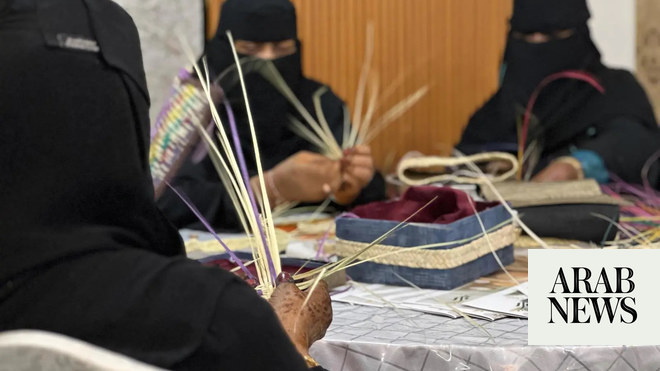How Sustainable Water Use Is Helping Saudi Rose Farms Transform Into a Global Industry
JEDDAH: Saudi-grown pink roses are loved across the Arabian Peninsula for their expert cultivation, vibrant colors, alluring fragrance and the many luxury products made from their petals, which make up a multi-million dollar industry.
Two types of pink roses are grown in the Kingdom: the Medina rose, which has a light pink tinge and grows year-round, thriving in both warm and cold climates, and the Taif rose, also known as the Jory or Damask rose, which grows only in spring.
Taif produces more than 550 million flowers each harvest season, which lasts between 45 and 60 days. The rose harvest season usually begins in late March or early April.

According to the Saudi Press Agency, 910 rose plantations cover 270 hectares and cultivate approximately 1.14 million bushes in areas such as Al-Hada, Al-Shifa, Wadi Muharram, Al-Wahat and Al-Wahit.
Products derived from these flowers enjoy great popularity and their value on the domestic market is SR 64 million ($ 17 million).
Considered a hallmark of the region's natural beauty, Taif roses are known for their exquisite, sweet fragrance, vibrant pink hues, and delicate petals. Grown at high altitudes, these roses thrive in the region's cool temperatures and fertile soil.
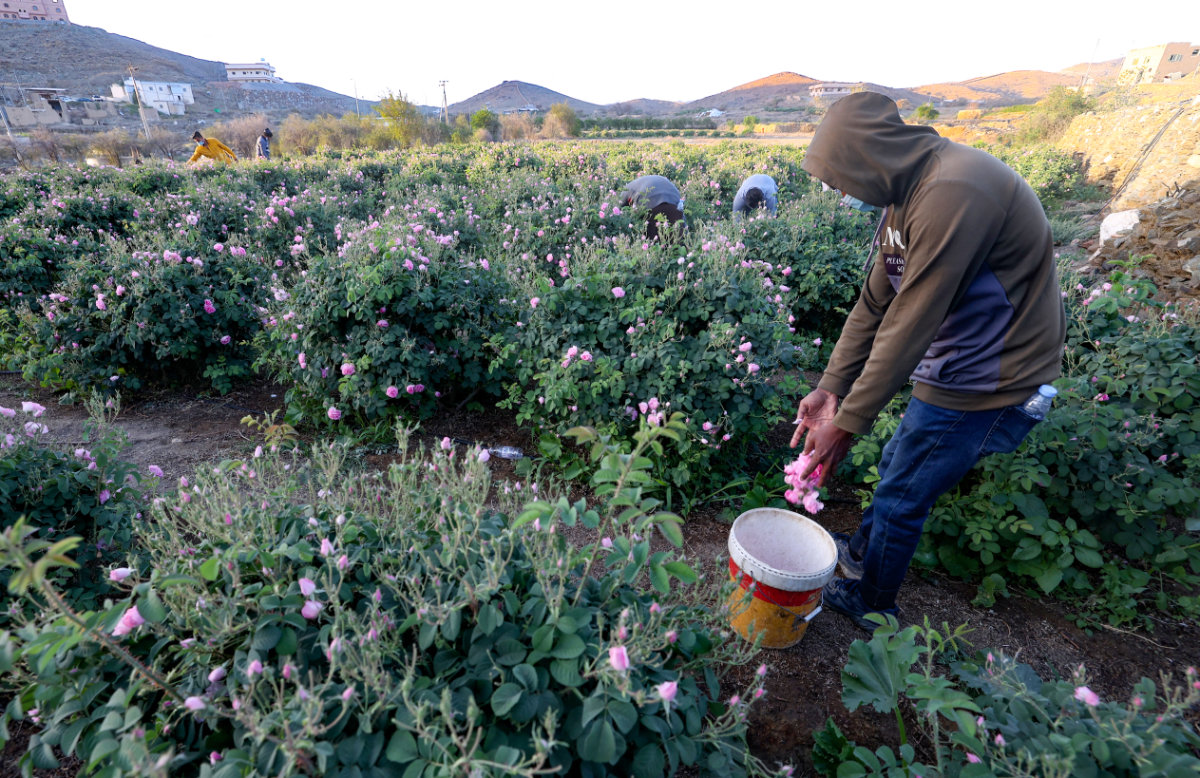
Every spring, roses bloom in Taif, transforming corners of the Kingdom's vast desert landscape into fragrant pink spots. (AFP Photo)
More than 60 farms and the families who run them participate in the region’s annual Rose Festival, usually held in April and May, where they display their products for five days of celebration.
These fragrant crops have transformed the mountainous governorate into a world capital of roses, earning a spot in the Guinness Book of Records in 2022 for the largest rose basket, containing 84,450 blooms.
To grow the sector, the Ministry of Environment, Water and Agriculture has initiated several projects, including the rehabilitation of agricultural terraces, the application of rainwater harvesting technologies and the Sustainable Rural Agricultural Development Programme.
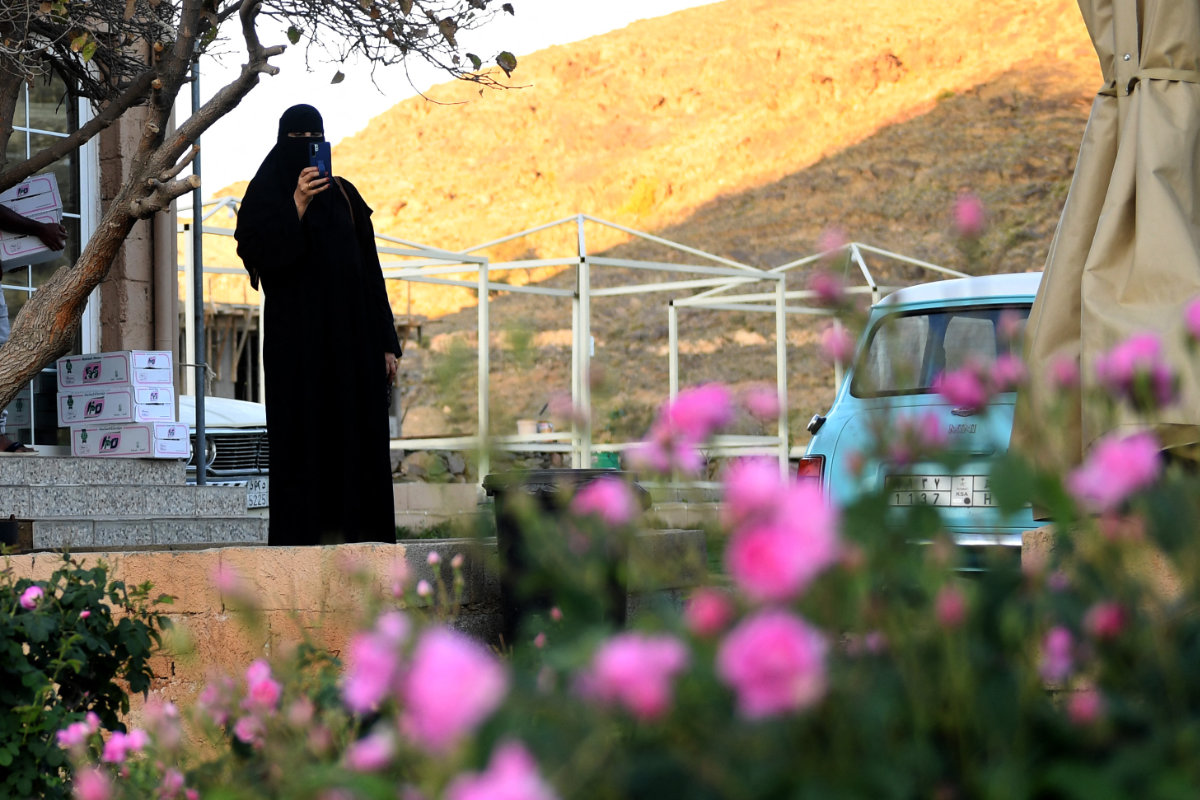
A Saudi woman takes a photo of a rose garden at Bin Salman Farm in Taif on March 13, 2021. (AFP Photo)
The ministry also supports specialized agricultural cooperatives, including the recently founded Rose and Aromatic Plants Association. This support allows them to invest in ministry land, produce aromatic oils, and benefit from the Agricultural Development Fund.
“The ministry is working on several initiatives and plans to achieve world leadership in the Taif rose sector and increase its production to 2 billion roses by 2026,” Saleh Bindakhil, spokesperson for the Ministry of Environment, Water and Agriculture, told Arab News.
DID YOU DO IT?KNOW?
• Taif produces more than 550 million flowers each harvest season, which lasts 45 to 60 days.
• Spread across 270 hectares, 910 farms in the western part of the Kingdom cultivate 1.14 million bushes.
• Rose oil products have a domestic market value of SR64 million ($17 million).
A group of horticulturists from the Department of Agricultural Orientation was recently sent to Bulgaria, the Philippines and Thailand to learn the latest technologies in rose oil production and environmentally friendly farming practices.
Farmers receive expert advice on best farming practices, while dedicated pest control teams respond quickly to requests for pesticide spraying to safeguard crops from potential threats.
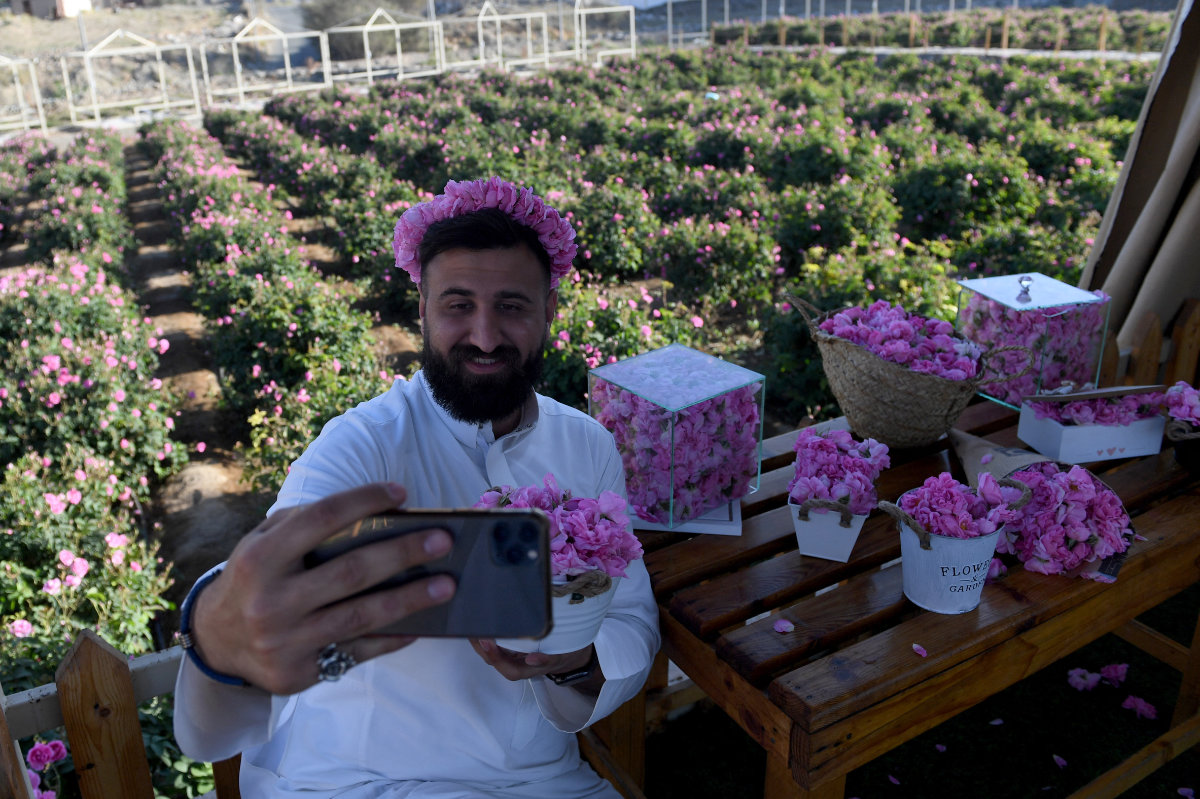
A tourist takes a photo with Taif roses at Bin Salman Farm in Taif city on March 13, 2021. (AFP)
The ministry also leads the construction of essential water infrastructure, including reservoirs and dams, and also facilitates the creation of irrigation networks to boost agricultural activities.
Emphasizing the importance of sustainable practices, the Ministry encourages small-scale rose growers to adopt and implement best practices in agriculture, providing them with valuable information on the use of advanced technologies and optimal rose production techniques, including essential oil extraction as part of a value chain development approach.
This section contains relevant reference points, entered in the (Opinion field)
“Taif governorate has long been recognized as the ideal and original environment for Taif rose bushes,” Bindakhil said.
“Generations have cared for these roses, passing on the tradition of harvesting, distilling and extracting rose oil and water. They have enjoyed the fragrant history of these roses in the mild, cool climate and mountainous nature on the top of the renowned Jabal Ghazwan.”
One of the uses of rose water extracted from Taif roses is the annual washing of the Kaaba in Mecca, a traditional practice supported by the Saudi government.
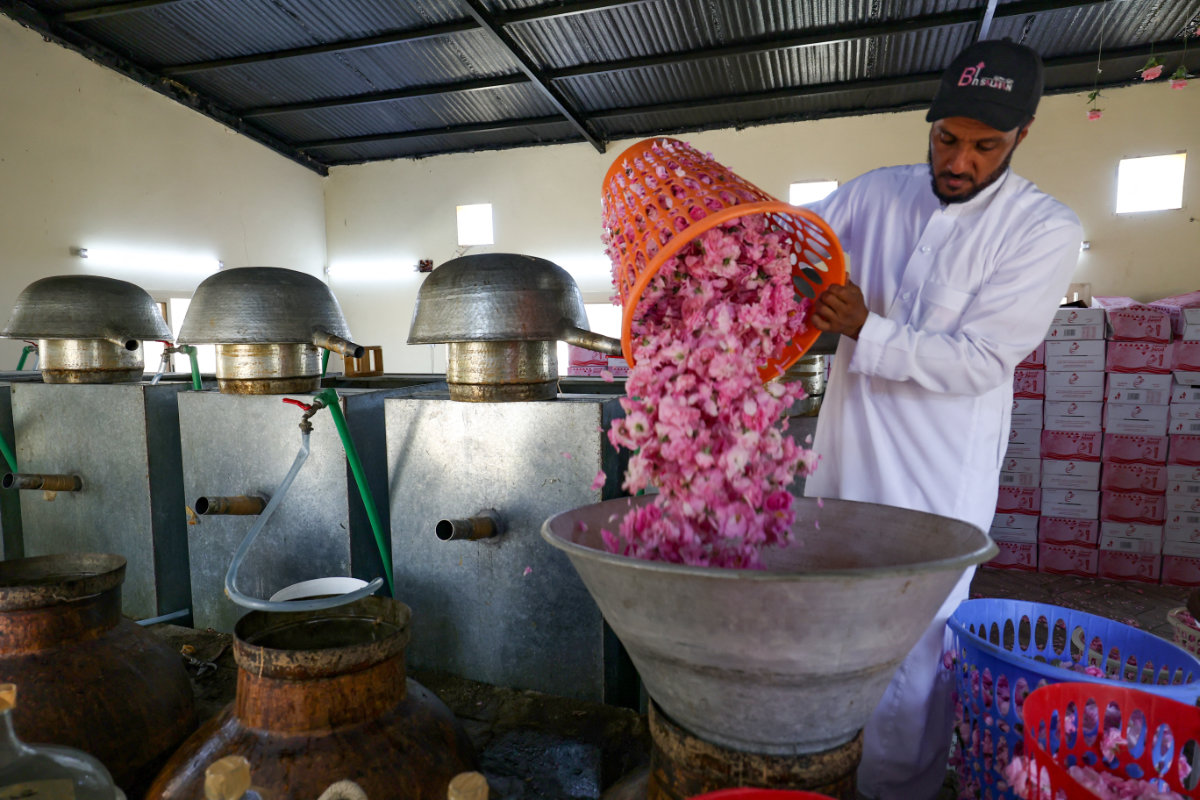
The distillation process, which lasts nine to twelve hours, is carried out using hermetically sealed copper pots. (Photo AFP)
The Kingdom has numerous factories and laboratories dedicated to the extraction and production of over 80 rose-derived products, resulting in various aromatic products and body care items.
The rose industry plays a significant role in regional development and the local economy, providing numerous employment and marketing opportunities and encouraging more women to enter the workforce.
To extract the rose oil, bags containing thousands of rose petals are poured into 90-liter copper vessels, which are then hermetically sealed for a distillation process that lasts nine to 12 hours.
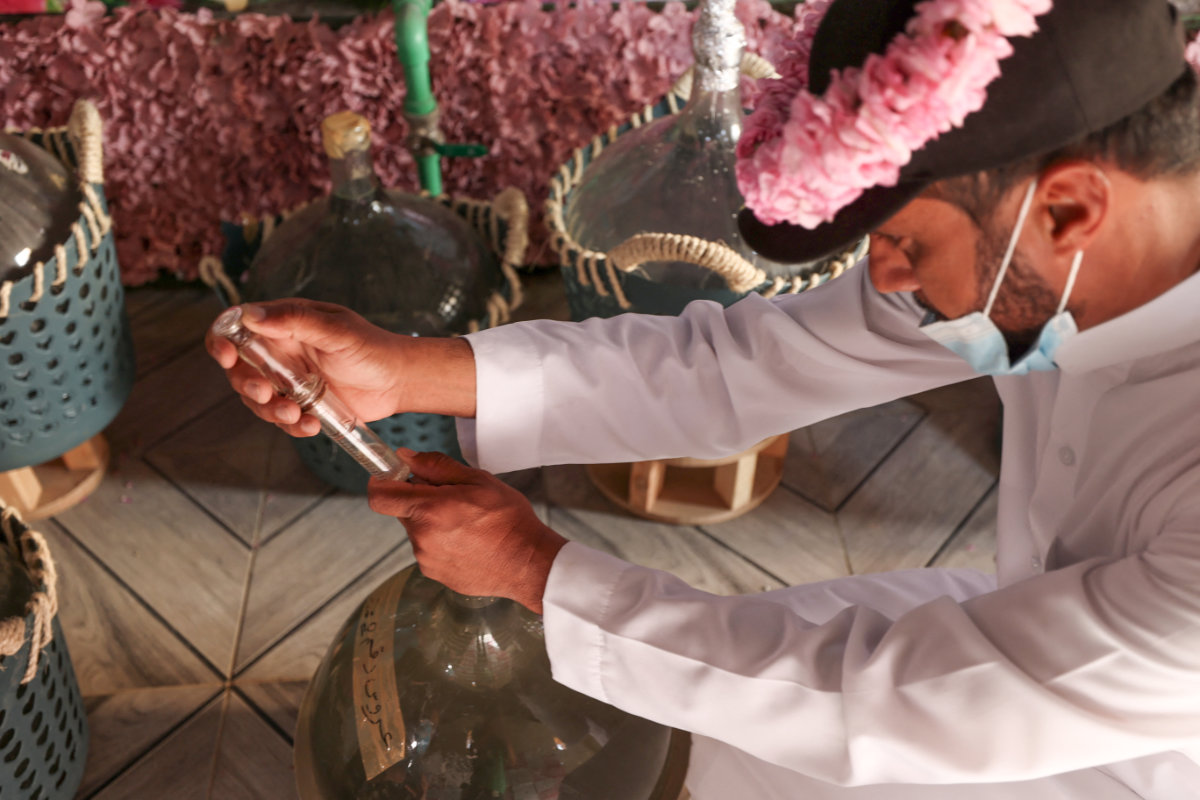
To produce the oily extract, which is then poured into 12-milliliter vials, 45,000 roses are needed. (Photo AFP)
It takes 45,000 roses to produce the oil extract, which is then poured into 12-milliliter vials, which start at $400, depending on the season.
Al-Kamal, founded in 1831, is the oldest factory of rose-derived cosmetics and cleaning products in the Kingdom. Located in Al-Hada in Medina, it is run by Khalid Al-Kamal, whose family has been working in the company for generations.
“It is a career inherited from father to son, from one generation to another, and I am very proud to tell you that I am the seventh generation to inherit this legacy,” Al-Kamal told Arab News in a 2021 interview.
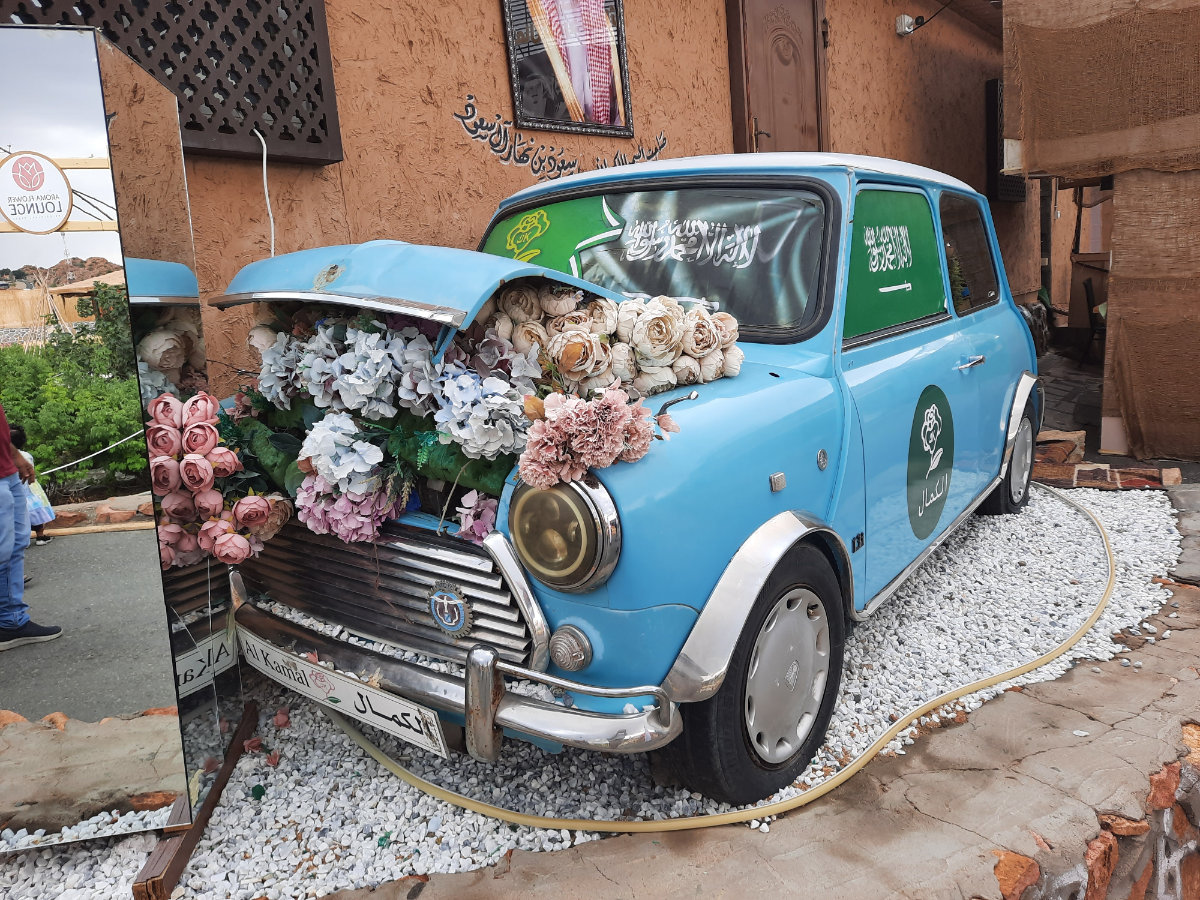
A view of the entrance to the Al-Kamal rose factory in Taif. (Shutterstock)
“Working in the field of rose cultivation requires a lot of delicacy, as the quality of roses is influenced by the soil and climate, as well as the cultivation method. I learned from my ancestors and now my three sons run the factory together with several workers.”
With several new government investments planned to promote sustainable use of water resources, Saudi Arabia’s rose industry will undoubtedly continue to thrive for years to come.

